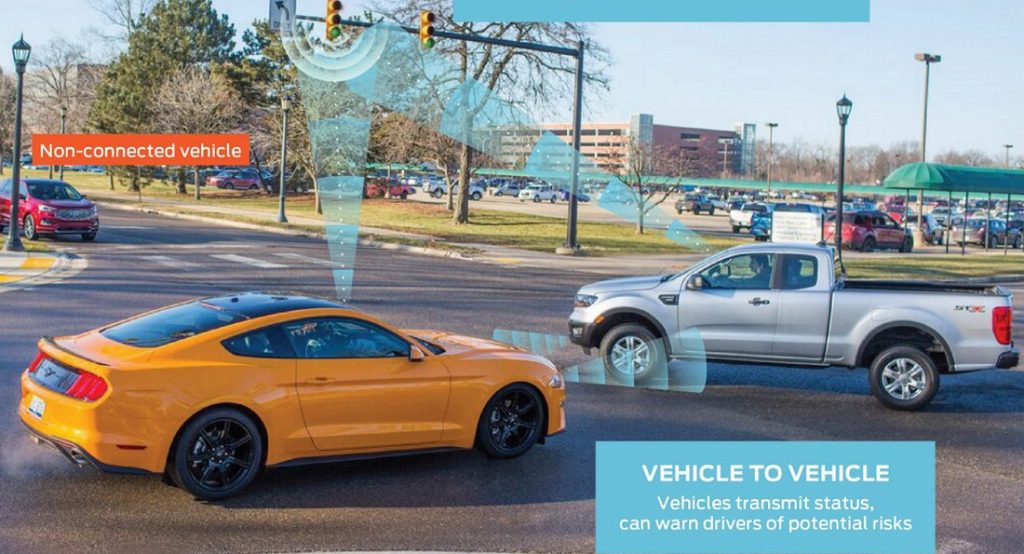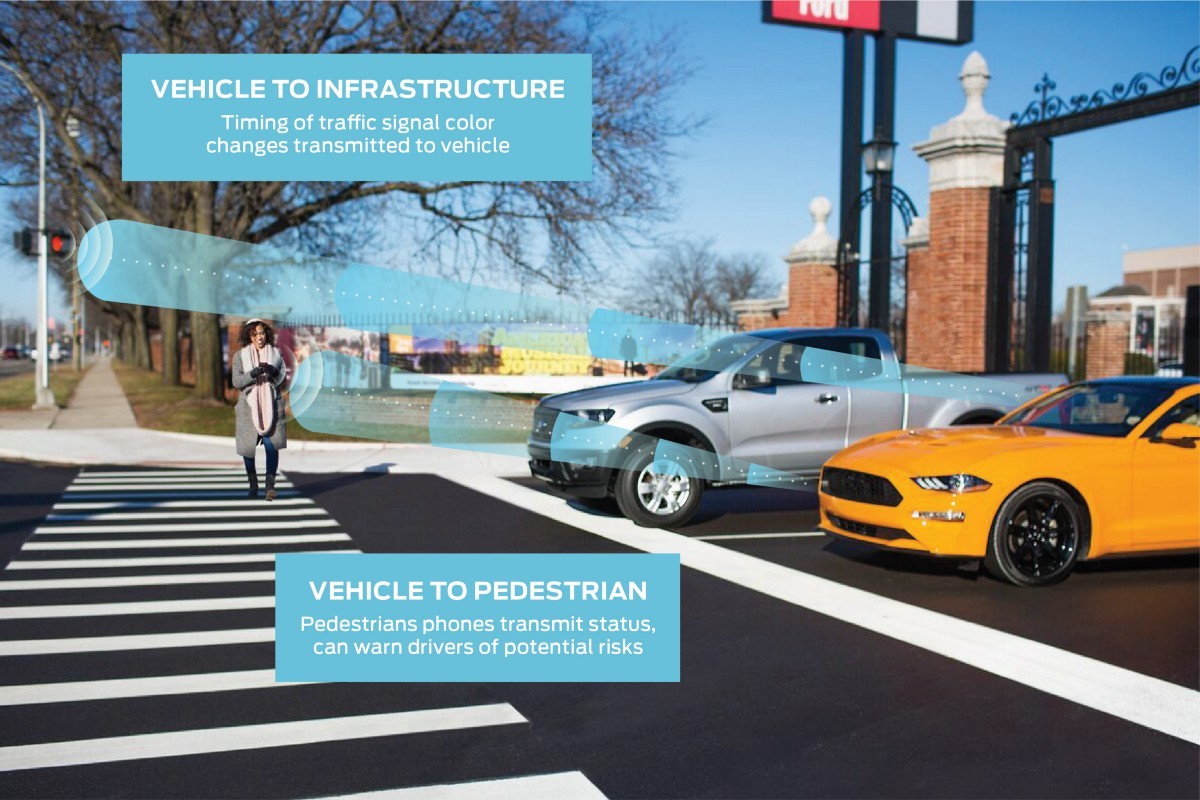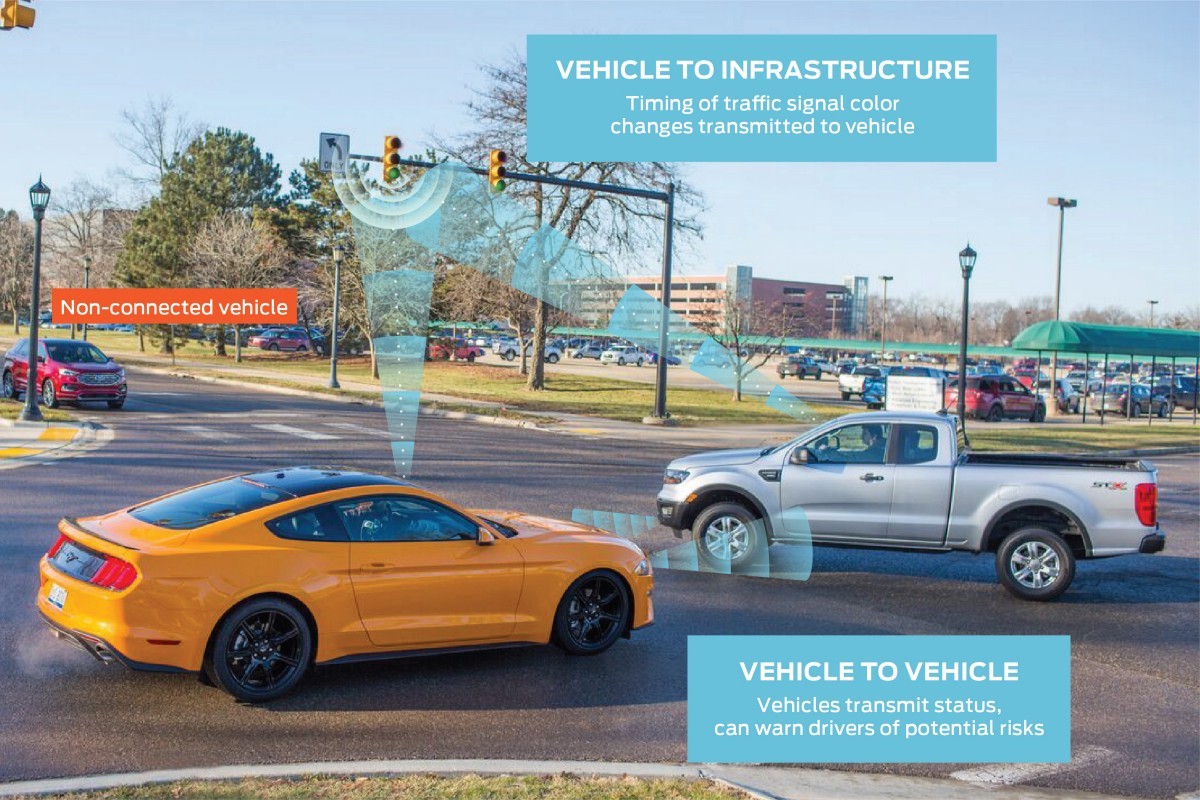Ford is following in the footsteps of Toyota and Lexus by announcing plans to install vehicle-to-everything (V2X) technology in all of its new U.S. vehicles starting in 2022.
The technology has been around for awhile and it will enable vehicles to communicate with one another as well as infrastructure and pedestrians. Speaking of the latter, pedestrians with a smartphone could be shown on a vehicle display even if they’re not visible to the driver.
Other safety benefits include the ability for vehicles involved in an accident to warn approaching cars. The ability to communicate with infrastructure also means that drivers could be given advanced notice about road construction so they can take a detour before they get stuck in gridlock.
The technology can also speed up your commute in other ways as cars will be able to communicate with traffic lights. This means drivers can be informed about how much longer a traffic light will stay red, so they’ll prepared the second it turns green.
Ford says their V2X system has been designed to work with its Co-Pilot360 suite of driver-assistance features. This isn’t too surprising, but Ford noted the technology could enable the automatic emergency braking system to activate if drivers don’t respond to an impending collision.
While Toyota and Lexus are using a dedicated short-range communications system to purposely avoid cellular data charges, Ford is going in the opposite direction as they’re sticking with a cellular network which uses a 5G connection. However, Ford’s executive director of connected vehicle platform and product, Don Butler, said their system allows for direct communication between devices and this means a “signal doesn’t need to first travel to a cellular tower.”
A lot of questions remain about Ford’s upcoming technology, but the reliance on a cellular connection could be its downfall as customers may not want to pay extra for it. In effect, V2X technology could come standard on millions of Ford vehicles but only a handful of drivers may take advantage of it. This would be disappointing as even Butler noted “This technology will only live up to its full potential if many vehicles on the road as well as roadside infrastructure take advantage of it.”






